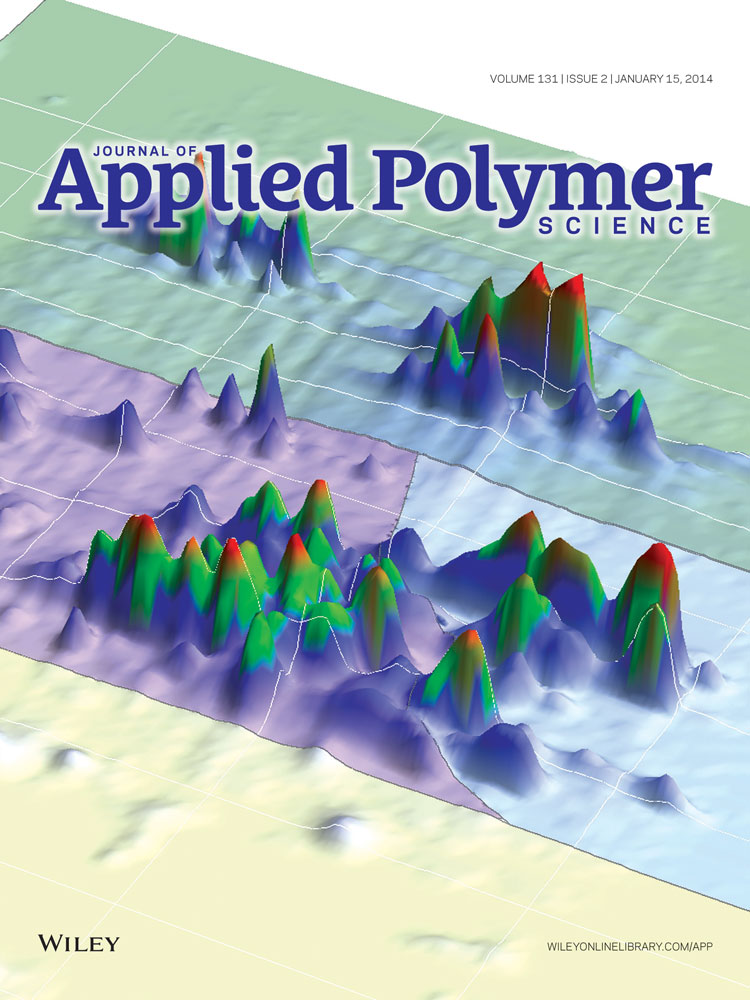Influence of combined pretreatment of quadrol and anhydrous ionic liquid microemulsion on the physicochemical property of masson pine
ABSTRACT
The physical properties of laboratory-prepared anhydrous ionic liquid microemulsion, including quasi-ternary phase diagram, conductivity, surface tension, and simulating graph of a microscopic particle system were investigated to maintain the optimum ratio of CTAB (Hexadecyl trimethyl ammonium Bromide) and n-butyl alcohol at 1/24 to 1/12. The microemulsion region can reach a maximum of 75% at lower temperatures. We constructed a combined pretreatment of quadrol and anhydrous ionic liquid microemulsion on masson pine powder and analyzed its properties by Fourier-transform infrared, thermogravimetric analysis-derivative thermogravimetry, XRD (X-ray diffraction), and scanning electron microscope. Results showed that hemicellulose and a noncrystalline region in cellulose were disrupted effectively after pretreatment. Relative crystallinity increased from 35.8 to 49.8. A few crystalline structures of cellulose I were recrystallized and then transformed to cellulose II as indicated by IR, XRD, and DTG results. Thermostability decreased, and the region with a main thermal weight loss at 375°C shifted to the region with a lower temperature at 310°C. The yield of glucose can reach to 78.2%, which is 2.2 times than that of untreated powder; the combined pretreatment is an effective method to promote the development of bio-energy. © 2013 Wiley Periodicals, Inc. J. Appl. Polym. Sci. 2014, 131, 39794.




